Discover 5 critical signs of gingivitis and dental disease in cats. Learn symptoms, treatment options, and prevention tips to keep your feline friend healthy.
Table of Contents
Every cat owner wants their feline companion to live a long, healthy life, but many overlook one of the most critical aspects of pet health: dental care. Gingivitis and dental disease in cats affect an estimated 70% of cats by age three, making it one of the most common health issues veterinarians encounter. Unlike humans, cats can’t tell us when their teeth hurt, making it essential for pet owners to recognize the warning signs before minor issues become serious health problems.
Dental disease in cats isn’t just about bad breath or yellow teeth. Left untreated, it can lead to tooth loss, painful infections, and even systemic health problems affecting the heart, liver, and kidneys. The good news is that with proper knowledge and preventive care, most dental issues in cats are entirely preventable.
In this comprehensive guide, we’ll explore the five most serious signs of feline dental disease, dive deep into cat dental disease symptoms, discuss gingivitis in cats treatment options, and provide you with the knowledge needed to protect your cat’s oral health for years to come.
Understanding Feline Dental Anatomy and Disease Progression
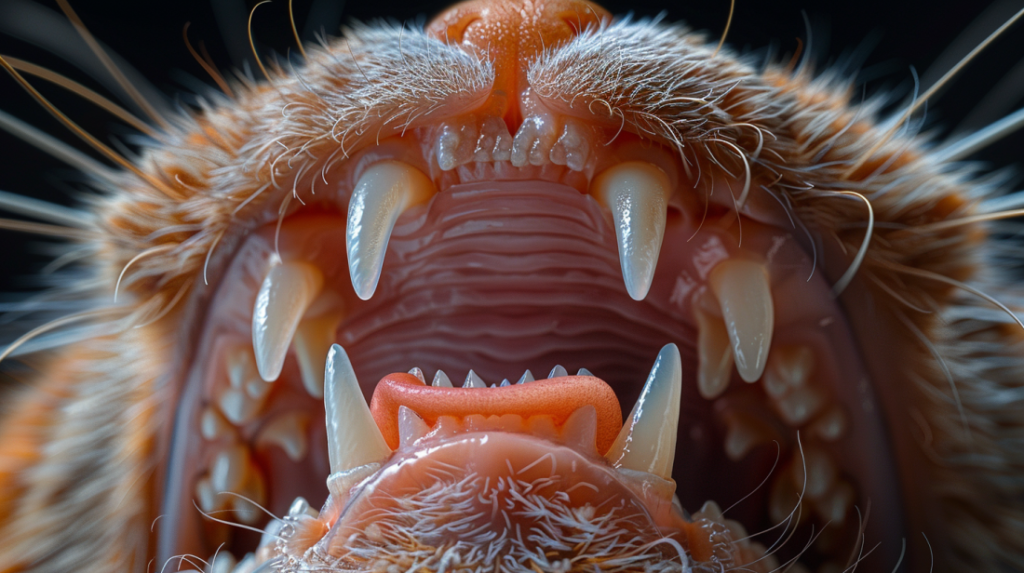
Before identifying the warning signs, it’s crucial to understand how dental disease develops in cats. The feline mouth contains 30 teeth in adult cats, each designed for specific functions from catching prey to grinding food. The process of dental disease typically follows this progression:
The Stages of Dental Disease
Stage 1: Plaque Formation Plaque begins forming within hours after eating, creating a sticky film of bacteria on the teeth. This colorless substance is the foundation of all dental problems.
Stage 2: Tartar Development When plaque isn’t removed, it hardens into tartar (calculus) within 3-5 days. Unlike plaque, tartar appears as yellow-brown deposits and can only be removed by professional cleaning.
Stage 3: Gingivitis Bacteria in plaque and tartar irritate the gums, causing inflammation, redness, and swelling. At this stage, the condition is still reversible with proper treatment.
Stage 4: Periodontal Disease Without intervention, gingivitis progresses to periodontal disease, where bacteria destroy the tissues and bone supporting the teeth. This stage often results in tooth loss and can affect overall health.
🐱 The 5 Serious Signs of Gingivitis in Cats
Click on any row to highlight important warning signs
| Warning Sign | Description | Severity Level | Action Needed |
|---|---|---|---|
| Bad Breath (Halitosis) | Persistent foul odor from mouth, often fishy or metallic smell that doesn’t improve with treats | Mild-Moderate | Schedule vet checkup within 2 weeks |
| Red & Swollen Gums | Gums appear bright red, puffy, or inflamed along the gum line, may bleed easily when touched | Moderate | Veterinary exam needed within 1 week |
| Yellow/Brown Tartar Buildup | Visible hard deposits on teeth, especially near gum line, creating rough texture on tooth surface | Moderate | Professional cleaning recommended |
| Difficulty Eating | Cat drops food, chews on one side, avoids hard food, or shows pain while eating | Severe | Urgent veterinary care needed |
| Excessive Drooling | Unusual amounts of saliva, often with blood tinged drool or reluctance to groom face | Severe | Emergency vet visit recommended |
The 5 Most Serious Signs of Gingivitis and Dental Disease in Cats
1. Persistent Bad Breath (Halitosis)
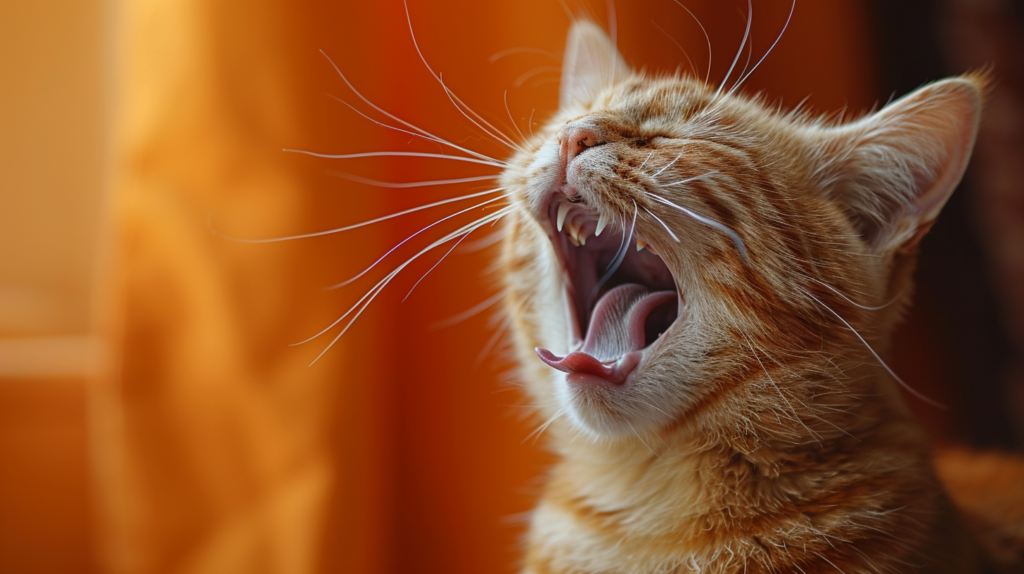
What to Look For: While occasional mild breath odor is normal, persistent, strong-smelling breath is often the first sign of dental disease. Healthy cats should have relatively neutral-smelling breath.
Why It Happens: Bad breath in cats results from bacterial overgrowth in the mouth. As bacteria multiply, they produce sulfur compounds that create the characteristic foul odor associated with dental disease.
Severity Indicators:
- Mild: Slightly unpleasant breath after eating
- Moderate: Noticeable odor during normal interaction
- Severe: Strong, offensive smell detectable from several feet away
When to Be Concerned: If you notice your cat’s breath has become increasingly unpleasant over several weeks, or if the odor is accompanied by other symptoms, schedule a veterinary examination promptly.
2. Red, Swollen, or Bleeding Gums
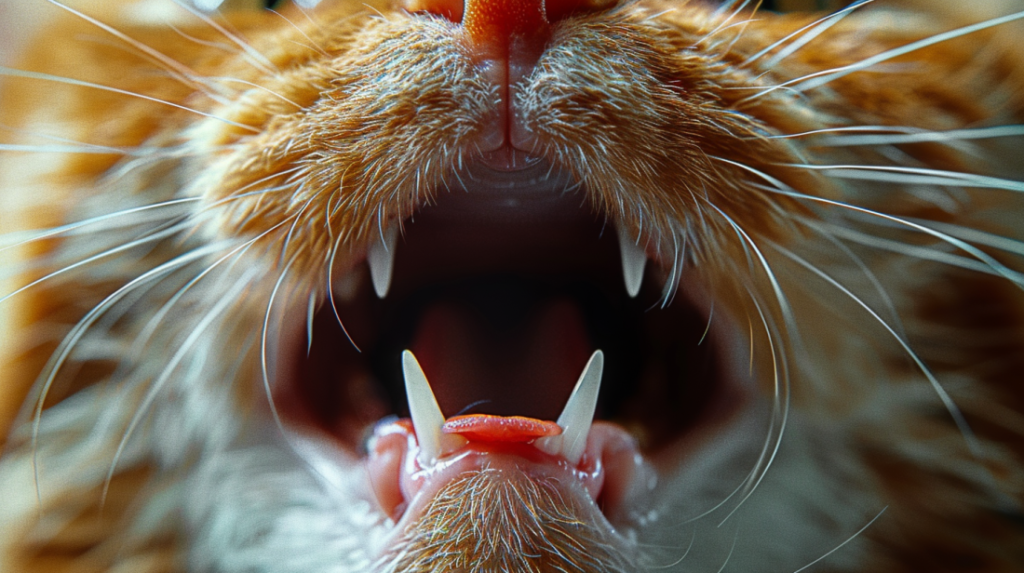
Visual Signs: Healthy cat gums should be pink and firm. Diseased gums may appear:
- Bright red or dark red along the gum line
- Swollen or puffy
- Bleeding when touched or during eating
- Receding from the teeth
The Inflammation Process: Gingivitis occurs when bacterial toxins irritate the gum tissue, causing the body’s immune system to respond with inflammation. This response, while meant to protect the cat, can become chronic and destructive if the underlying bacterial infection isn’t addressed.
Progressive Symptoms:
- Early Stage: Slight redness along the gum line
- Moderate Stage: Noticeable swelling and bleeding during eating
- Advanced Stage: Severe inflammation, spontaneous bleeding, and gum recession
Home Examination Tips: Gently lift your cat’s lip to examine the gums. Look for any color changes, swelling, or bleeding. If your cat resists examination or shows signs of pain, this may indicate significant dental disease.
3. Difficulty Eating and Changes in Eating Habits
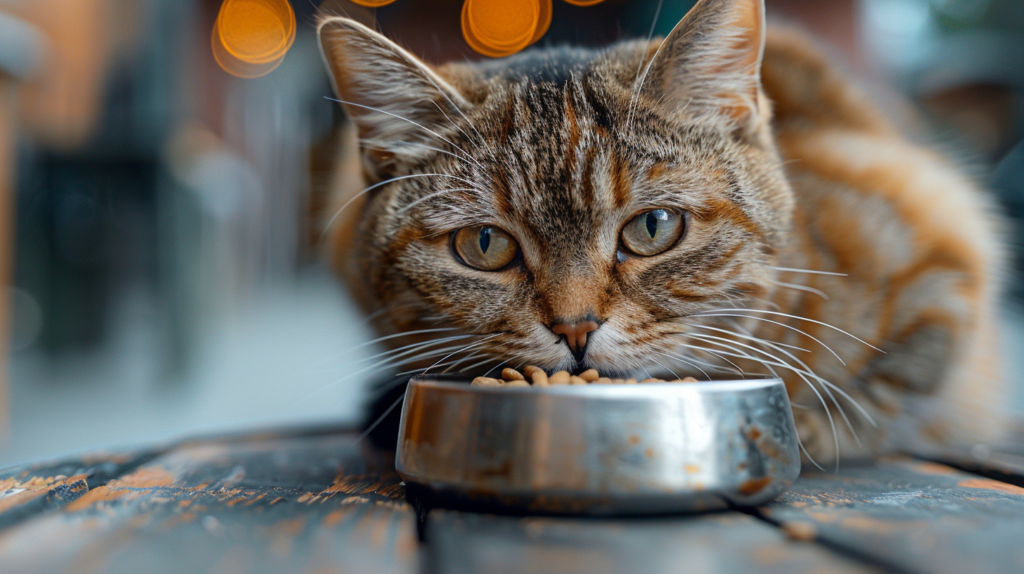
Behavioral Changes to Monitor: Cats with dental pain often modify their eating habits rather than stop eating entirely. Watch for:
- Favoring soft food over dry kibble
- Eating more slowly or cautiously
- Dropping food while eating
- Chewing on one side of the mouth
- Approaching food then walking away
- Swallowing food whole without chewing
Pain Indicators: Unlike dogs, cats are masters at hiding pain. Dental discomfort may manifest as:
- Pawing at the face or mouth
- Excessive drooling
- Tilting the head while eating
- Reluctance to eat hard treats they previously enjoyed
Nutritional Concerns: When cats avoid eating due to dental pain, they risk:
- Weight loss and muscle wasting
- Nutritional deficiencies
- Weakened immune system
- Exacerbation of other health conditions
Case Study: Dr. Sarah Mitchell, a veterinary dentist with 15 years of experience, recalls a case where a 7-year-old Persian cat named Whiskers lost 15% of his body weight over three months. The owner attributed the weight loss to aging, but a dental examination revealed severe periodontal disease affecting multiple teeth. After treatment, Whiskers regained his appetite and returned to his normal weight within six weeks.
4. Excessive Drooling and Pawing at the Face
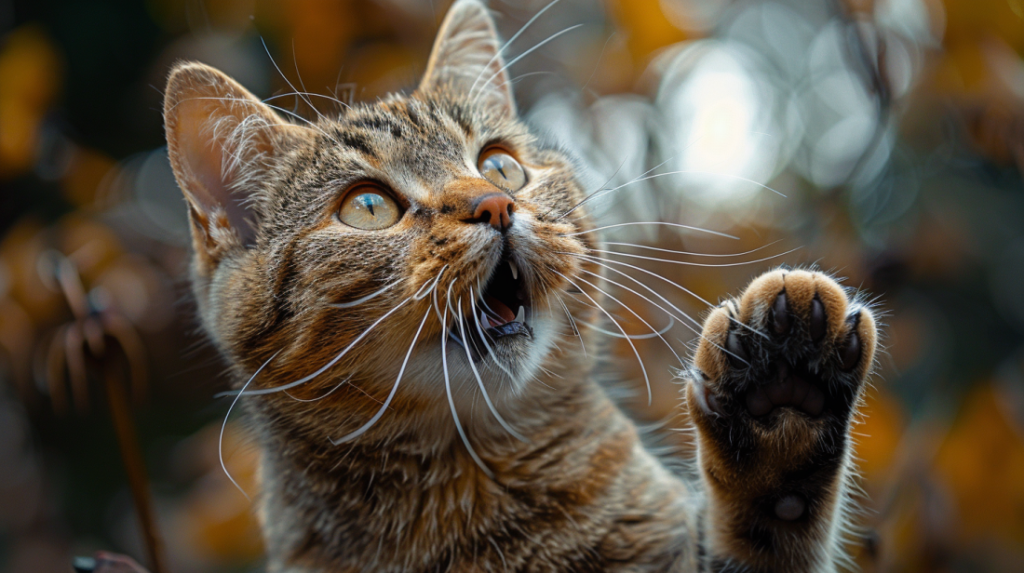
Normal vs. Abnormal Drooling: While some cats naturally drool when content (especially when purring), sudden onset of excessive drooling often indicates oral pain or discomfort.
Types of Concerning Drool:
- Bloody Drool: Indicates gum disease or oral injury
- Thick, Ropey Drool: May suggest nausea or severe dental pain
- Constant Drooling: Persistent saliva production beyond normal grooming
Associated Behaviors: Cats with dental pain may exhibit:
- Pawing at the mouth or face
- Rubbing their face against furniture
- Shaking their head frequently
- Reluctance to have their head touched
Medical Implications: Excessive drooling can lead to:
- Skin irritation around the mouth and chin
- Dehydration if severe
- Secondary bacterial infections
- Social withdrawal due to discomfort
5. Tooth Discoloration, Loose Teeth, and Visible Tartar
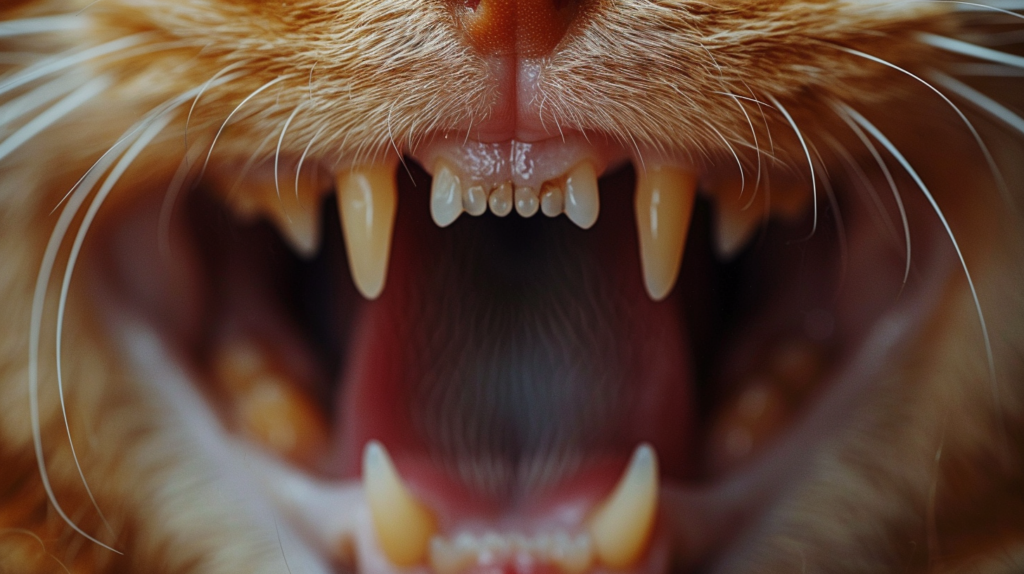
Visual Dental Abnormalities:
Tooth Discoloration:
- Yellow/Brown Staining: Usually indicates tartar buildup
- Gray/Black Teeth: May signal tooth death or severe decay
- Red Staining: Often blood from inflamed gums
Loose or Missing Teeth: Adult cats should retain all their teeth throughout their lives with proper care. Loose teeth indicate:
- Advanced periodontal disease
- Bone loss around tooth roots
- Possible need for extraction
Tartar Accumulation: Visible tartar appears as:
- Hard, yellow-brown deposits on teeth
- Rough texture on tooth surfaces
- Particularly heavy buildup along the gum line
- Formation of “calculus bridges” between teeth
Professional Assessment: A veterinary dental examination can reveal:
- Degree of tartar accumulation
- Gum pocket depth measurements
- X-ray findings of bone loss
- Treatment recommendations
💊 Cat Dental Care Treatment Options
Compare professional and home care solutions – tap to highlight
| Treatment Option | Type | Description | Effectiveness | Cost Range |
|---|---|---|---|---|
| Professional Dental Cleaning | Professional | Complete oral examination under anesthesia with scaling, polishing, and X-rays | ⭐⭐⭐⭐⭐ Excellent | $300-800 |
| Daily Tooth Brushing | Home Care | Using cat-specific toothpaste and soft brush to remove plaque daily | ⭐⭐⭐⭐ Very Good | $10-25 |
| Dental Treats & Chews | Prevention | VOHC-approved treats that help reduce tartar through mechanical action | ⭐⭐⭐ Good | $15-40/month |
| Water Additives | Home Care | Enzyme-based solutions added to drinking water to reduce bacteria | ⭐⭐⭐ Good | $20-35 |
| Prescription Dental Diet | Prevention | Specially formulated kibble with texture that helps clean teeth during chewing | ⭐⭐⭐⭐ Very Good | $45-80/month |
| Dental Wipes | Home Care | Pre-moistened wipes for cats who won’t tolerate brushing | ⭐⭐ Fair | $12-25 |
| Oral Surgery | Professional | Tooth extraction or periodontal surgery for advanced dental disease | ⭐⭐⭐⭐⭐ Excellent | $500-2000+ |
Understanding Cat Dental Disease Symptoms: A Comprehensive Overview
Early Warning Signs
Subtle Behavioral Changes:
- Decreased grooming around the face
- Reluctance to play with toys requiring mouth use
- Changes in vocal patterns (less meowing)
- Preference for softer sleeping surfaces
Physical Indicators:
- Slight gum inflammation
- Mild plaque accumulation
- Occasional bad breath
- Minor changes in eating speed
Advanced Symptoms
Severe Physical Signs:
- Tooth mobility or loss
- Facial swelling
- Nasal discharge (in cases of tooth root abscesses)
- Jaw chattering or grinding
Systemic Effects: Research indicates that severe dental disease can affect:
- Cardiovascular System: Bacteria can enter the bloodstream and affect heart valves
- Kidney Function: Chronic inflammation may impact kidney health
- Liver Health: Bacterial toxins can stress liver function
- Immune System: Chronic infection weakens overall immunity
Age-Related Considerations
Kitten Dental Development (0-6 months):
- 26 deciduous teeth emerge by 6 weeks
- Adult teeth replace baby teeth by 6 months
- Monitor for retained baby teeth or eruption problems
Adult Cats (1-7 years):
- Prime time for preventive care
- Tartar accumulation begins
- Professional cleanings may be needed annually
Senior Cats (7+ years):
- Increased risk of dental disease
- May require more frequent dental care
- Higher likelihood of tooth extractions
Gingivitis in Cats Treatment: Professional and Home Care Options
Professional Veterinary Treatment
Comprehensive Dental Examination: A thorough veterinary dental assessment includes:
- Visual oral examination
- Dental X-rays (radiographs) under anesthesia
- Probing of gum pockets
- Assessment of tooth mobility
- Development of treatment plan
Professional Dental Cleaning Process:
- Pre-anesthetic Evaluation:
- Blood work to assess organ function
- Physical examination
- Discussion of anesthetic risks
- Anesthetic Dental Cleaning:
- Complete scaling above and below the gum line
- Polishing to smooth tooth surfaces
- Fluoride treatment
- Extraction of severely damaged teeth if necessary
- Post-procedure Care:
- Pain management protocols
- Antibiotic therapy if indicated
- Home care instructions
- Follow-up appointments
Treatment Costs and Considerations: Professional dental cleaning costs typically range from $300-$1,500 depending on:
- Geographic location
- Extent of dental disease
- Need for extractions
- Additional treatments required
Home Care Strategies
Daily Dental Hygiene:
Tooth Brushing Technique:
- Start with finger massage of gums
- Introduce cat-specific toothpaste (never use human toothpaste)
- Use a soft-bristled cat toothbrush or finger brush
- Brush in circular motions along the gum line
- Focus on outer tooth surfaces initially
- Gradually increase brushing time and coverage
Alternative Cleaning Methods:
- Dental Wipes: Pre-moistened cloths for quick cleaning
- Water Additives: Enzymes that reduce bacteria in drinking water
- Dental Treats: Specially formulated to reduce tartar
- Prescription Diets: Kibble designed to mechanically clean teeth
Environmental Enrichment:
- Provide appropriate chew toys
- Rotate toys to maintain interest
- Monitor for broken pieces that could be swallowed
Natural and Supplemental Approaches
Dietary Supplements:
- Probiotics: Support healthy oral bacteria balance
- Omega-3 Fatty Acids: Reduce inflammation
- Coenzyme Q10: Supports gum health
- Cranberry Extract: May help prevent bacterial adhesion
Herbal Remedies: While not replacements for professional care, some natural approaches may provide supplemental benefits:
- Coconut oil (in small amounts) for its antimicrobial properties
- Aloe vera gel (cat-safe formulations) for soothing inflamed gums
- Green tea extract for antioxidant benefits
Important Safety Note: Always consult with your veterinarian before introducing any supplements or natural remedies, as some substances safe for humans can be toxic to cats.
⏰ Cat Dental Disease Prevention Timeline
Age-specific dental care recommendations – click to highlight each stage
| Age Range | Life Stage | Dental Care Activities | Professional Care | Key Focus |
|---|---|---|---|---|
| 8-16 weeks | Kitten |
Handle mouth and teeth daily
Gentle finger massage of gums
Introduce dental-friendly toys
|
Initial vet exam | Mouth handling acceptance training |
| 3-6 months | Young Kitten |
Begin tooth brushing training
Use kitten-safe toothpaste
Monitor teething process
|
Vaccination visits | Adult teeth eruption monitoring |
| 6 months – 2 years | Young Adult |
Daily tooth brushing routine
Dental treats and toys
Water additives if needed
|
Annual checkups | Establishing good dental habits |
| 2-7 years | Adult |
Continue daily brushing
Monitor for early disease signs
Maintain dental diet if recommended
|
Every 1-2 years | Prevention and early detection |
| 7-11 years | Mature Adult |
Increased monitoring frequency
More frequent dental examinations
Address emerging issues promptly
|
Every 6-12 months | Early intervention for age-related changes |
| 11+ years | Senior |
Gentle but consistent care
Monitor eating habits closely
Pain management considerations
|
Every 6 months | Comfort and quality of life maintenance |
Prevention Strategies: Keeping Your Cat’s Teeth Healthy
Establishing a Dental Care Routine
Age-Appropriate Care:
Kittens (8 weeks – 6 months):
- Handle mouth and teeth regularly
- Introduce tooth brushing gradually
- Monitor for proper tooth eruption
- Begin dental-friendly treats
Adult Cats (6 months – 7 years):
- Daily tooth brushing ideal
- Professional cleanings as recommended
- Monitor for early signs of disease
- Maintain consistent home care routine
Senior Cats (7+ years):
- Increased vigilance for dental problems
- Modified care for sensitive mouths
- More frequent veterinary assessments
- Adapted diet as needed
Nutritional Support for Dental Health
Dry vs. Wet Food Considerations:
- Dry Food: Provides some mechanical cleaning action
- Wet Food: Easier for cats with dental pain
- Combination Feeding: Often the best approach
Dental-Specific Diets: Several manufacturers produce foods specifically designed for dental health:
- Hill’s Prescription Diet t/d
- Royal Canin Dental
- Purina Pro Plan Veterinary Diets DH
Treat Selection: Choose dental treats that:
- Carry the Veterinary Oral Health Council (VOHC) seal
- Are appropriately sized for your cat
- Don’t break into sharp pieces
- Are given in moderation
Environmental Factors
Stress Reduction: Chronic stress can weaken the immune system and make cats more susceptible to dental disease. Provide:
- Consistent routines
- Safe hiding places
- Appropriate environmental enrichment
- Multiple resource stations in multi-cat households
Water Quality:
- Provide fresh, clean water daily
- Consider filtered water in areas with hard water
- Multiple water sources throughout the house
- Water fountains to encourage drinking
When to Seek Emergency Veterinary Care
Immediate Attention Required
Critical Signs:
- Facial swelling, especially around the eyes or jaw
- Inability to eat or drink for more than 24 hours
- Excessive drooling with blood
- Signs of severe pain (hiding, vocalization, aggression)
- Difficulty breathing (rare but possible with severe infections)
Potential Complications:
- Tooth Root Abscesses: Can cause facial swelling and systemic infection
- Osteomyelitis: Bone infection requiring aggressive treatment
- Septicemia: Bloodstream infection from dental bacteria
- Jaw Fracture: Can occur with severe periodontal disease
Scheduling Routine Care
Regular Dental Examinations:
- Annual dental assessments for adult cats
- Bi-annual exams for senior cats
- More frequent monitoring for cats with existing dental disease
Professional Cleaning Frequency: Most cats benefit from professional dental cleaning every 1-3 years, depending on:
- Individual susceptibility to dental disease
- Effectiveness of home care
- Age and overall health status
- Breed predispositions
🐱 Frequently Asked Questions
Expert answers to your cat dental care questions
Breed-Specific Considerations and Genetic Factors
High-Risk Breeds
Brachycephalic Breeds:
- Persians, Himalayans, and Exotic Shorthairs
- Crowded teeth increase plaque accumulation
- May require more frequent professional care
Oriental Breeds:
- Siamese, Oriental Shorthair, and related breeds
- Higher incidence of gingivitis and periodontal disease
- May develop symptoms at younger ages
Maine Coons and Large Breeds:
- Susceptible to tooth resorption lesions
- May require specialized treatment approaches
Genetic Predispositions
Tooth Resorption:
- Affects 30-70% of cats over age 5
- Painful condition requiring extraction
- More common in certain genetic lines
Juvenile Gingivitis:
- Severe gingivitis in young cats
- May be related to immune system dysfunction
- Often requires aggressive treatment
Enamel Defects:
- Hereditary conditions affecting tooth structure
- Increase susceptibility to decay and disease
- May require specialized dental care
The Economic Impact of Dental Disease
Cost of Prevention vs. Treatment
Preventive Care Annual Costs:
- Basic home care supplies: $50-100
- Professional cleaning: $300-800
- Annual dental examination: $50-150
- Total Prevention: $400-1,050 per year
Treatment Costs for Advanced Disease:
- Comprehensive dental treatment: $800-2,500
- Multiple extractions: $1,500-4,000
- Treatment of complications: $2,000-5,000+
- Total Treatment: $4,300-11,500+
Insurance Considerations: Pet insurance policies vary in dental coverage:
- Some cover dental disease treatment
- Most exclude preventive care
- Pre-existing conditions often not covered
- Annual limits may apply
Return on Investment
Quality of Life Benefits:
- Reduced pain and discomfort
- Improved appetite and nutrition
- Better overall health outcomes
- Stronger human-animal bond
Longevity Factors: Cats with good dental health typically:
- Live longer lives
- Have fewer systemic health problems
- Require less medical intervention
- Maintain better quality of life into senior years
Expert Insights and Research Findings
Recent Veterinary Research
Cornell University Study (2023): A comprehensive study of 1,200 cats found that regular home dental care reduced the need for professional cleaning by 40% and decreased the incidence of tooth extractions by 60%. The study emphasized that even imperfect home care significantly improved oral health outcomes.
Journal of Veterinary Dentistry Findings: Research published in 2023 revealed that cats with untreated dental disease had:
- 3x higher risk of kidney disease
- 2.5x higher risk of heart disease
- Significantly shorter lifespans compared to cats with good dental health
Veterinary Expert Opinions
Dr. Brook Niemiec, Board-Certified Veterinary Dentist: “The biggest mistake cat owners make is waiting until dental disease is advanced before seeking treatment. By the time most cats show obvious signs of dental pain, they’ve been suffering in silence for months or even years. Early intervention is key to maintaining both oral and systemic health.”
Dr. Jan Bellows, Diplomate AVDC: “Home dental care for cats doesn’t have to be perfect to be effective. Even wiping your cat’s teeth with a damp cloth twice a week can significantly reduce bacterial load and improve gum health. The goal is to disrupt the bacterial biofilm before it becomes established.
Creating a Dental Health Plan for Your Cat
Assessment Phase
Initial Evaluation:
- Schedule a comprehensive veterinary dental examination
- Discuss your cat’s current oral health status
- Identify any immediate treatment needs
- Develop a personalized dental care plan
Home Environment Assessment:
- Evaluate current feeding practices
- Assess your cat’s temperament for home care
- Identify potential stressors that might affect oral health
- Plan for necessary supplies and equipment
Implementation Strategy
Month 1: Foundation Building
- Begin mouth handling exercises
- Introduce dental-friendly treats
- Start with dental wipes or finger brushing
- Establish a consistent routine
Month 2-3: Skill Development
- Progress to soft-bristled toothbrush
- Increase brushing frequency
- Monitor gum health improvements
- Address any resistance issues
Month 4+: Maintenance and Monitoring
- Maintain consistent daily care routine
- Schedule regular veterinary check-ups
- Adjust care plan as needed
- Monitor for any changes in oral health
Long-term Success Strategies
Consistency Over Perfection: Remember that regular, imperfect dental care is better than sporadic perfect care. Build sustainable routines that work for both you and your cat.
Positive Reinforcement:
- Use high-value treats during dental care sessions
- Keep sessions short and positive
- End on a successful note
- Gradually increase duration and complexity
Regular Monitoring:
- Weekly visual inspection of teeth and gums
- Monthly documentation of any changes
- Immediate veterinary consultation for concerns
- Annual professional dental assessments
The Future of Feline Dental Care
Emerging Technologies
Advanced Diagnostic Tools:
- Digital dental radiography for better imaging
- Fluorescence technology to detect early decay
- Genetic testing to identify predispositions
- AI-assisted diagnosis and treatment planning
Innovative Treatment Options:
- Laser therapy for gingivitis treatment
- Regenerative medicine for periodontal disease
- Improved anesthetic protocols for safer procedures
- Minimally invasive surgical techniques
Preventive Innovations
New Product Development:
- More effective dental diets and treats
- Advanced water additives and supplements
- Improved toothbrush and toothpaste formulations
- Automated dental care devices
Educational Advancements:
- Virtual reality training for pet owners
- Mobile apps for tracking dental health
- Telemedicine consultations for dental concerns
- AI-powered symptom recognition tools
Special Considerations for Multi-Cat Households
Unique Challenges
Resource Competition:
- Ensure each cat has access to fresh water
- Provide multiple feeding stations
- Monitor individual eating habits
- Address social stressors that may affect health
Disease Transmission:
- Some oral bacteria can spread between cats
- Maintain individual dental care routines
- Isolate cats with active infections during treatment
- Clean and disinfect shared food and water bowls regularly
Individual Care Plans:
- Recognize that each cat may have different needs
- Customize dental care approaches for each personality
- Monitor for signs of dental disease in all cats
- Schedule individual veterinary examinations
Management Strategies
Efficient Care Routines:
- Establish consistent care schedules for each cat
- Use color-coded supplies to prevent cross-contamination
- Create calm environments for dental care
- Consider professional help if managing multiple cats becomes overwhelming
Early Detection Systems:
- Daily visual inspections during feeding time
- Weekly weight monitoring to detect eating difficulties
- Monthly photographs of each cat’s teeth and gums
- Immediate veterinary consultation for any concerns
For more expert pet care tips and product recommendations, visit BlithePet.com — your trusted source for pet wellness.
Conclusion
Gingivitis and dental disease in cats represent serious health concerns that affect the majority of feline companions, but they are largely preventable with proper care and attention. The five critical warning signs we’ve discussed – persistent bad breath, red and swollen gums, difficulty eating, excessive drooling, and visible dental abnormalities – serve as your early warning system to catch problems before they become severe.
Remember that cat dental disease symptoms often develop gradually, and cats are masters at hiding discomfort. By implementing a comprehensive dental care routine that includes daily home care, regular veterinary examinations, and appropriate gingivitis in cats treatment when needed, you can help ensure your feline friend maintains healthy teeth and gums throughout their life.
The investment in preventive dental care pays dividends not only in terms of your cat’s comfort and quality of life but also in avoiding costly emergency treatments and potential systemic health complications. Start today by examining your cat’s mouth, establishing a daily care routine, and scheduling a professional dental evaluation with your veterinarian.
Your cat depends on you to recognize the signs of dental disease and take appropriate action. With the knowledge and tools provided in this guide, you’re well-equipped to become your cat’s first line of defense against dental disease.
Have a similar experience with your pet? Share it in the comments below!

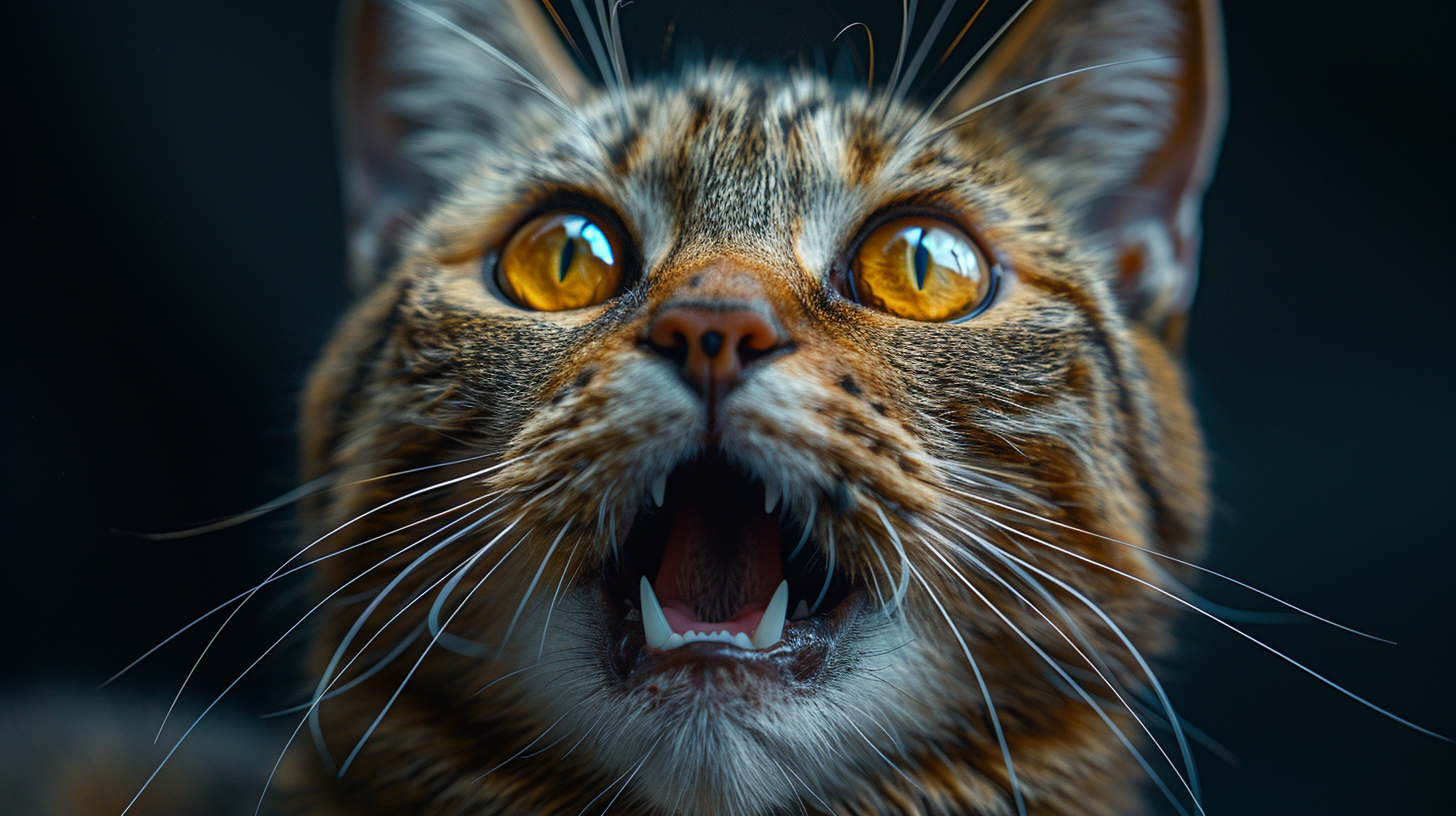
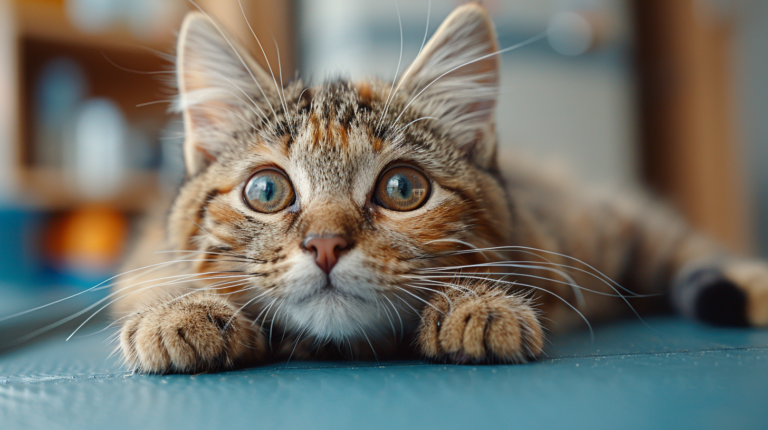
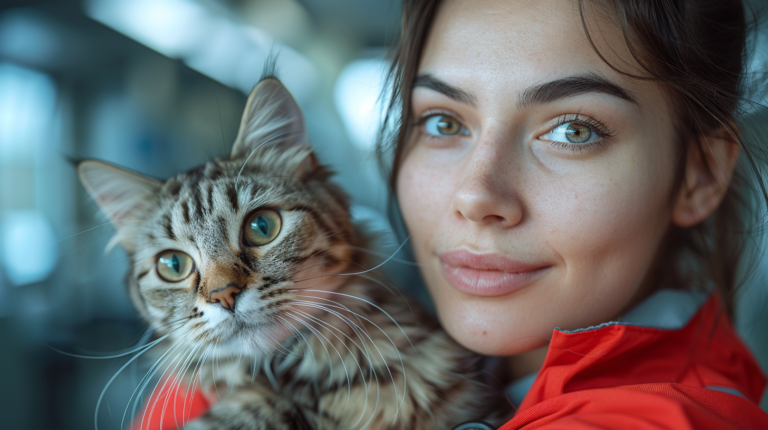
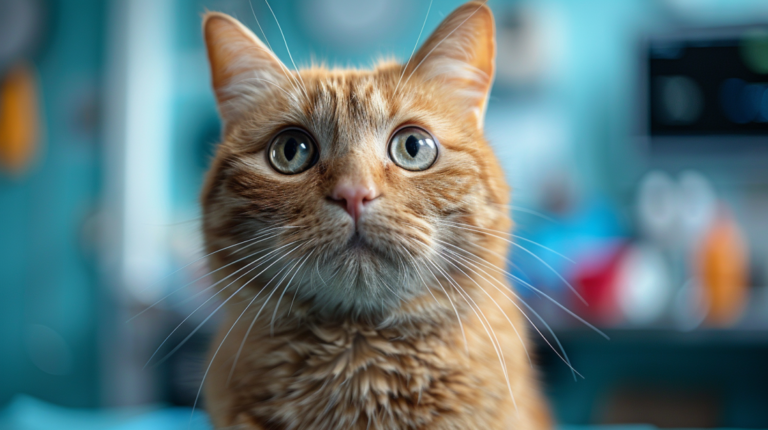
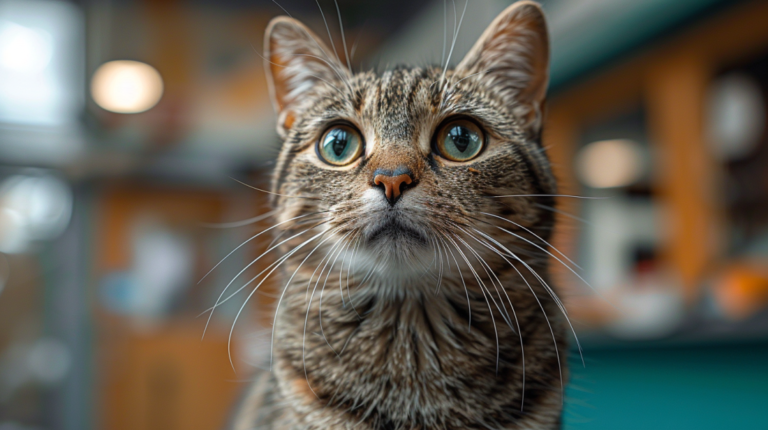
Leave a Reply